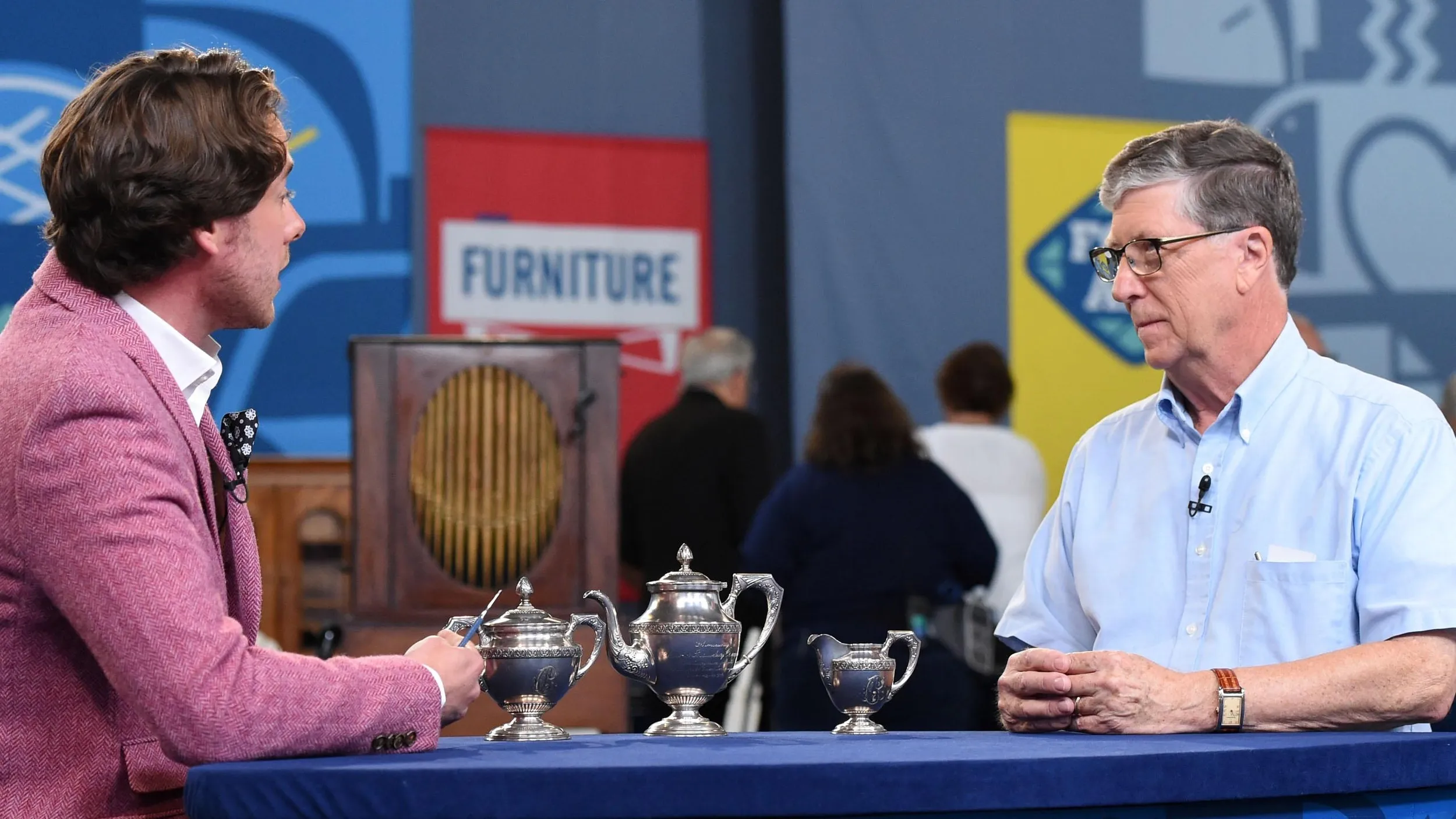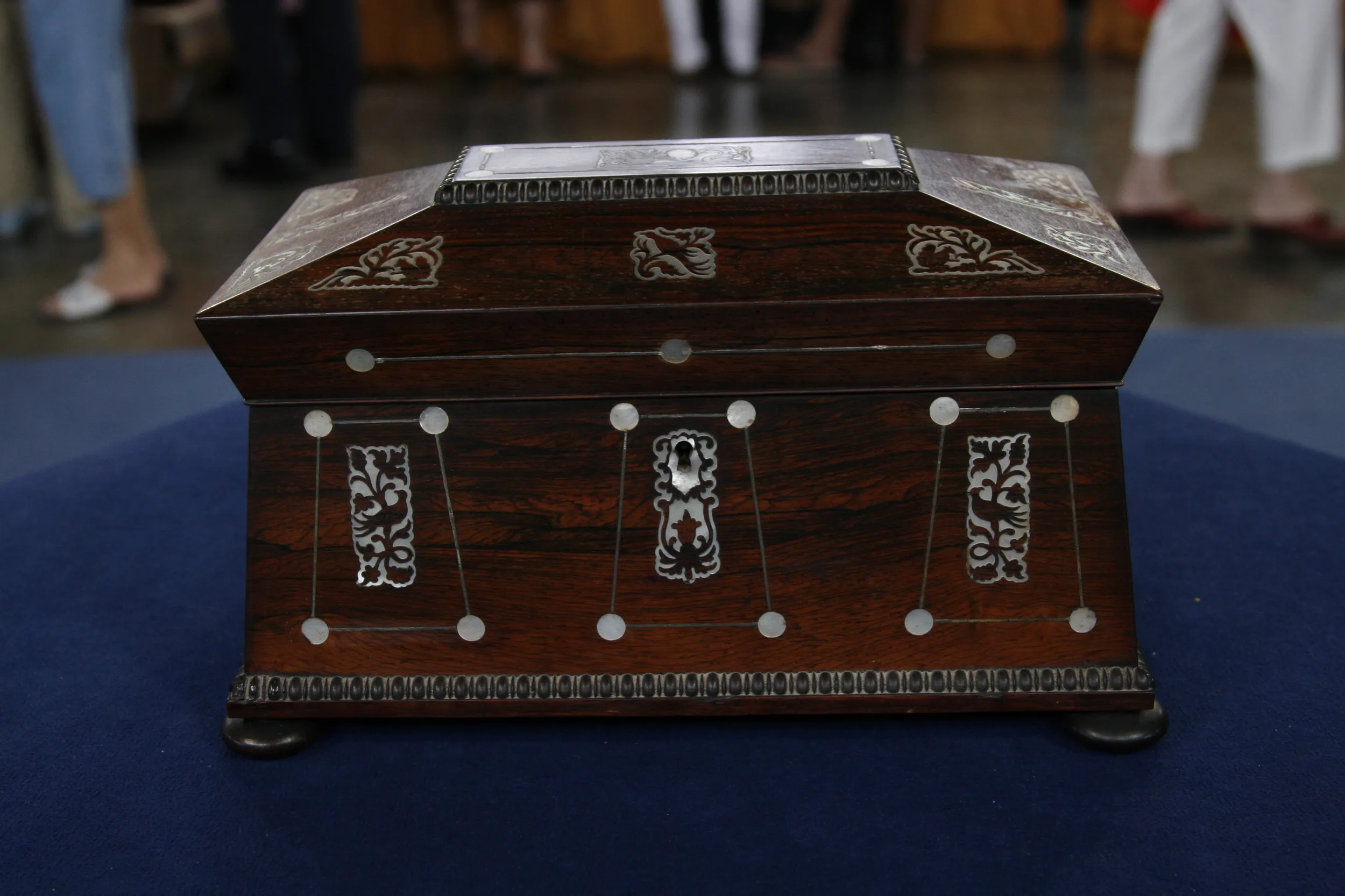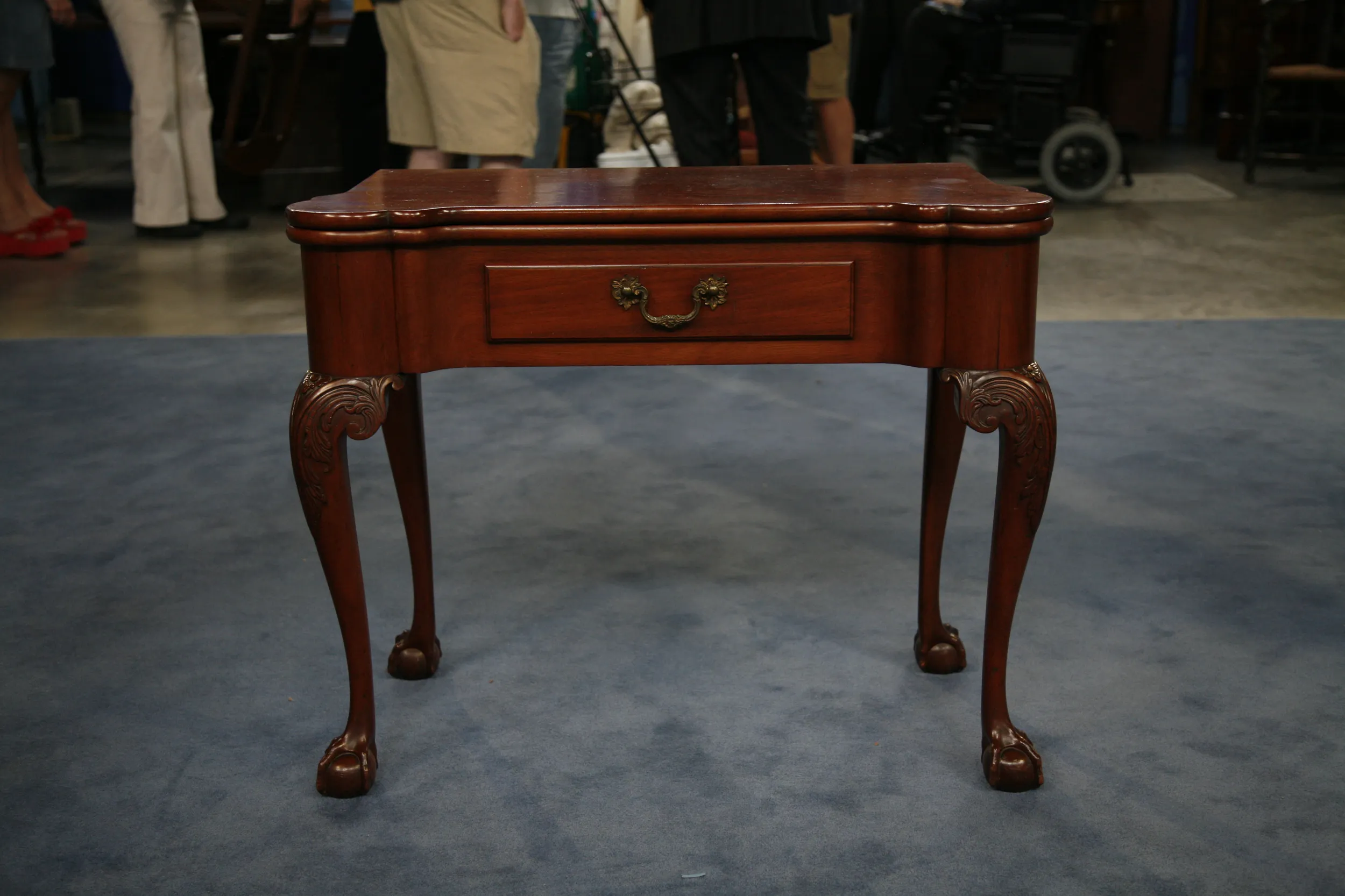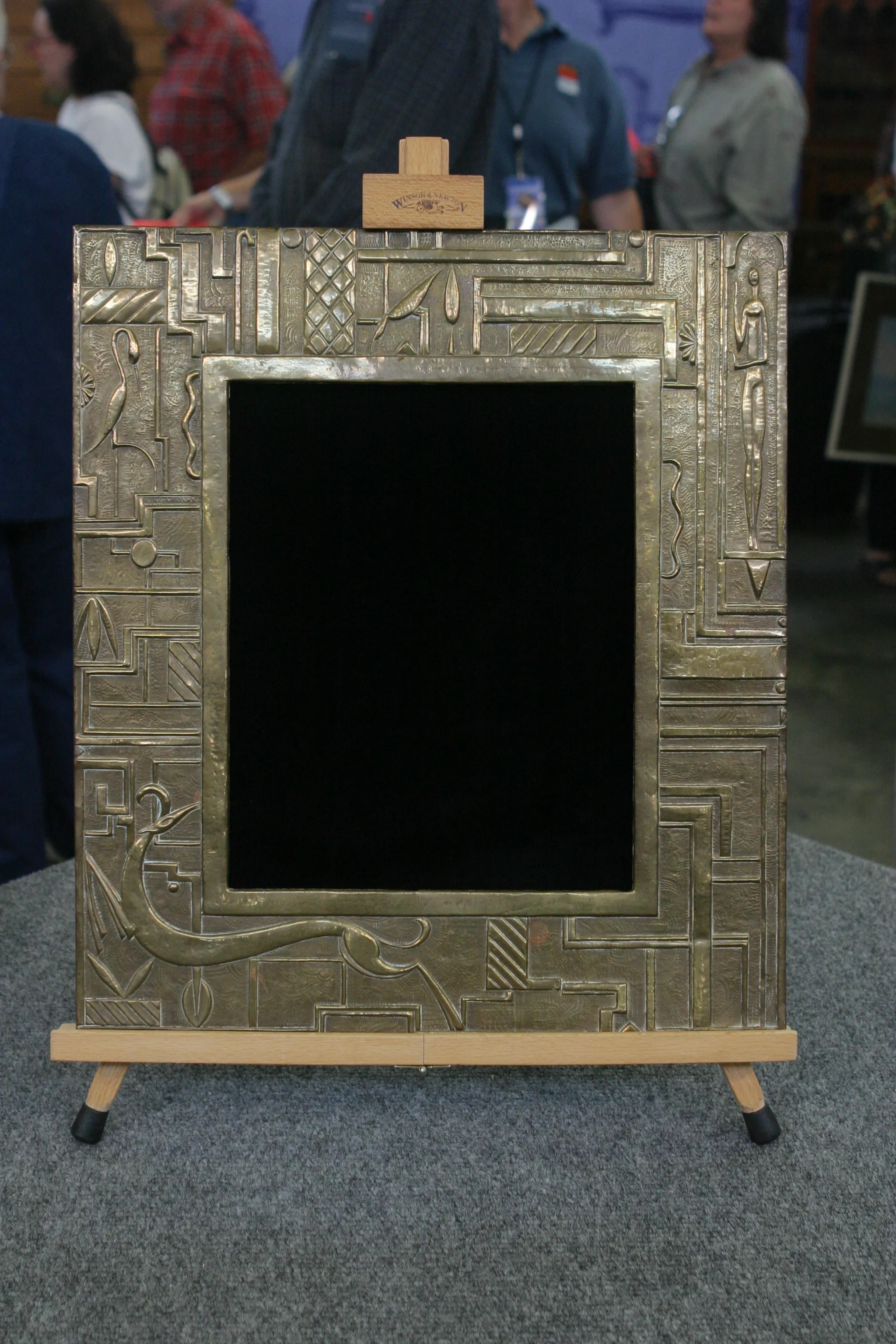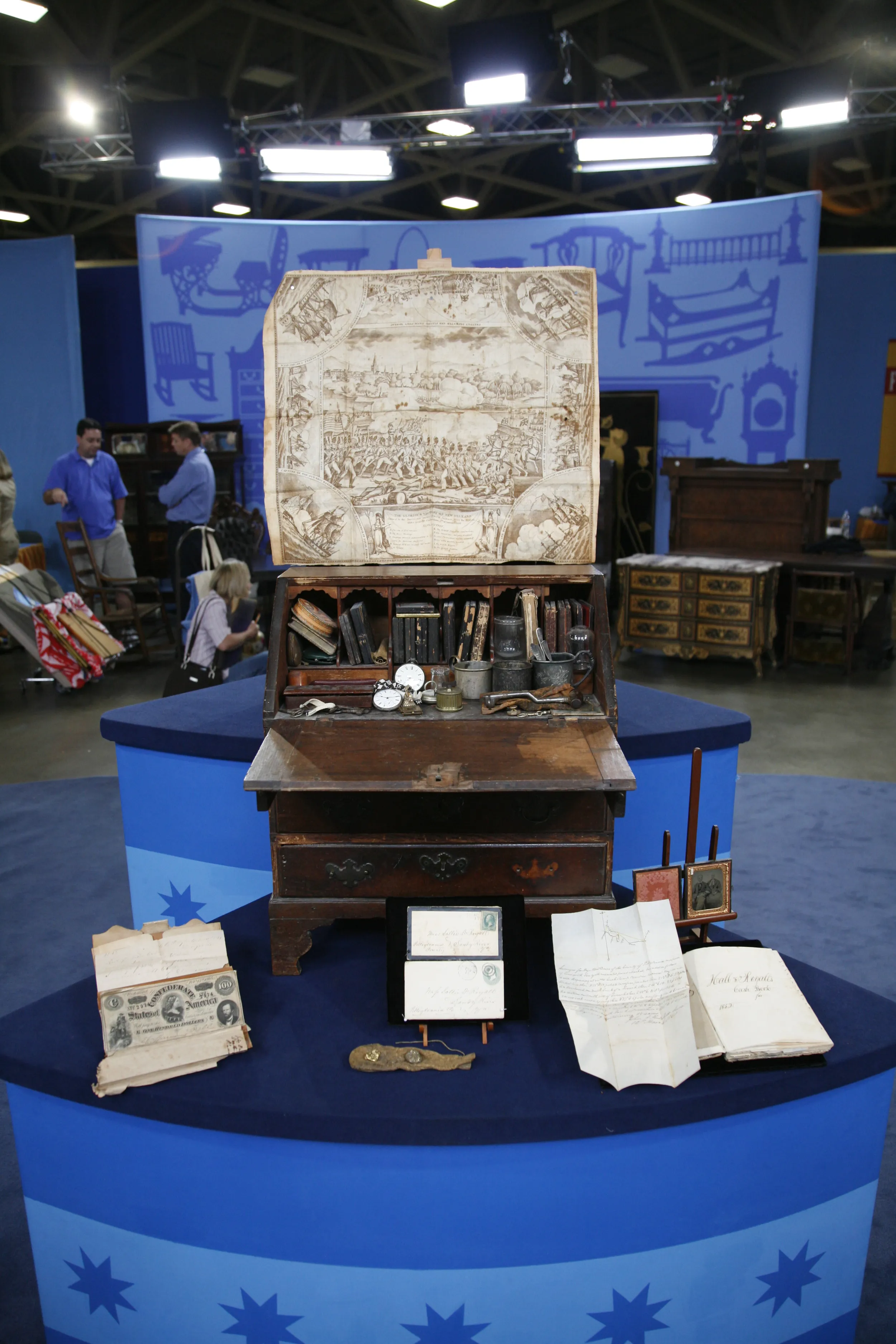GUEST: This clock was given to me about 15 years ago from my grandmother...
APPRAISER: Okay.
GUEST: ...who received it when she was right around 17 years old.
APPRAISER: Oh, really?
GUEST: And right after her mother passed away, her father went out to a yard sale, was just going to purchase a gift for her, and this is what he came home with. However many years later, back in early 2000, I was moving into a home, and I had a nice mantel, and she said, "You need a clock to put on that mantel," so she gave me this, and that's where it sat.
APPRAISER: I'll bet you've enjoyed it.
GUEST: I've loved it. It's a great clock.
APPRAISER: Yeah, it's a pretty clock, isn't it?
GUEST: It's very pretty, it's very heavy, it's probably about 25 pounds.
APPRAISER: Yes.
GUEST: It's very solid brass with, as you can see, the inlays on it.
APPRAISER: Do you know anything about the clock?
GUEST: I do not. I've not found any markings on it, on who has made it or, you know, where it came from, or its age. I'm assuming with it being an antique when my grandmother received it…
APPRAISER: Yes.
GUEST: ...It probably is over 100 years old, or thereabouts.
APPRAISER: Mm-hmm.
GUEST: So that's pretty much all that I know about it.
APPRAISER: Well, that's a good guess, it really is. Because that's about how old the clock is. The clock actually was made by the New Haven Clock Company. They're the folks that made the mechanism. And then they made the dial. The clock is an eight-day clock. I don't know if you run it or not, but it does strike on the hour and half hour. It has what we call an outside escapement. When the clock is running, that gear right there in the center turns. And it gave you some motion right there on the dial. It was actually an added feature that New Haven, the manufacturer, used or offered in their clocks. But what they did is they went to the J. and J.G. Low Tile Company in Chelsea, Massachusetts, and had these tiles produced. And then they would inset these tiles in this brass frame, very aesthetic period… clock.
GUEST: Mm-hmm.
APPRAISER: With these beautiful tiles with the putti. You can see the putti here. There's additional ones on the side panels also. It's paneled on three sides. And then you have the panel up on top. Very fluid motion to the design on the top. Very pretty clock. As far as a date, they usually date from the 1880s, 1890s.
GUEST: Mm-hmm.
APPRAISER: And it's sort of the tail end of that Victorian period, but they were moving more toward the Art Nouveau look. They are nice clocks. Looking at it, it's just a pretty clock. These will retail for usually about $4,000...
GUEST: Wow.
APPRAISER: ...to $4,500.
GUEST: Wow, that's great.

